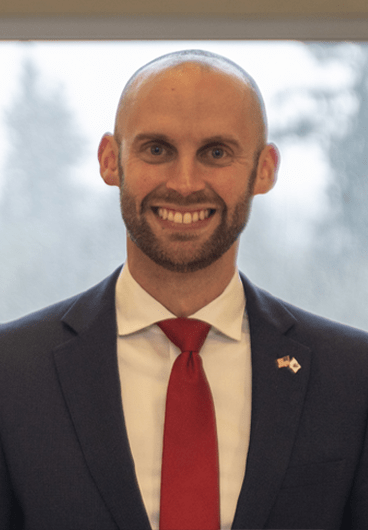
Nicholas Davies
Ogden Elementary School
Vancouver, Washington
nick.davies@vansd.org
Best Practices
1) Parent and Community Relations: Improving our parent and community relations has a direct impact on our school. We encourage teachers to invite families into their classrooms for projects, presentations, or just to volunteer. We want our school to be a welcoming place for everyone. We also partner closely with families when it comes to discipline. Before sending a student home, we often get a family member on the phone or in the building to see if they can help us work with the student to get them back into the classroom and learning. We do the same thing for developing academic and behavior support plans. If we want to succeed with any of our interventions, we need parental support to make it happen.
In addition to inviting families into the building during the day, we reach them every week. We use newsletters translated into multiple languages and video messages with captions. For those parents who cannot come into the building, we try to tell our story by introducing the staff through our newsletters and highlighting the incredible things our students are doing. Our story is constantly being told, so we want to lead that message. Additionally, we try to have a family night every month or two to bring the community into the building. We partner with local churches to help feed everyone and build a sense of belonging. Furthermore, when we make more significant decisions (for example, we are looking at a name change for one school), we rely on parent input before making a decision (just one of the many stakeholders we include).
Although most of my work comes through the official capacity of being an assistant principal, I also spend time each fall as a volunteer youth soccer coach in the neighborhood that one of my schools pulls students from. Coaching soccer has allowed me to see the community in another light and spend time with families in a completely different setting.
2) Instructional Leadership: Instructional leadership works well in my school for two main reasons. First, we make instructional leadership a priority in the building. We do this by blocking off time in our calendars to be in classrooms consistently. The principal and I compare schedules, so when I observe in a classroom, the principal can respond to needs in the moment and vice versa. This schedule lets us give the teacher and students our full attention, leading to better conversations and feedback.
Additionally, the principal, instructional coach, and I do calibration observations. During calibration observations, we observe the same teachers at the same time to talk about what we see and get in alignment with how we give feedback to teachers. The consistent messaging relays the importance of what we are doing in the building.
The other piece of prioritizing instructional leadership is giving timely feedback to teachers after observations. If we cannot meet in person, we have email conversations about notices and wonderings from the lesson. If the observation follow-up isn’t timely, we miss an opportunity for coaching conversations. Lastly, we listen to teacher feedback around what professional development they need to help move their teaching practices forward. Depending on the teacher’s needs, we connect them with specialists in our building who can support them or find outside resources that could help.
The second reason instructional leadership works well in my schools is that we use data to drive instructional improvement. Using data plays a prominent role in our professional learning communities (PLCs) and our Multi-Tiered Systems of Support (MTSS). Our teachers meet with their grade-level teams every Monday to discuss Richard Dufour’s 4 PLC questions. As administrators, we support this work by attending PLC meetings and joining in on the conversations about how to help students best. These conversations focus on how students perform in class, specifically around common assessments each grade level team uses.
Furthermore, our MTSS team meets weekly to discuss students well below grade level. We meet with a new grade level each week to talk about different students. These students have already been brought up in PLCs, but, unfortunately, those interventions did not have the desired impact. Our team looks at the student’s strengths, personal history, achievement data, and social-emotional needs to develop a new six-week intervention. We have seen a lot of student growth by using this process, and it has helped identify those students who need more services than we can offer in a general education environment.


